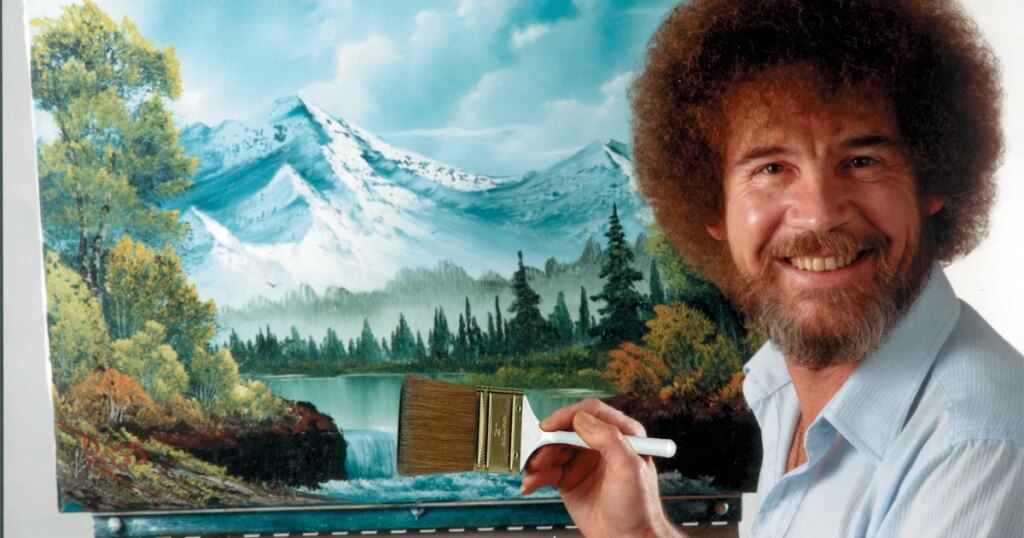A remarkable auction featuring thirty iconic paintings by Bob Ross is set to commence, aimed at supporting small and rural public television stations facing financial strains due to federal funding cuts. Bob Ross, beloved for his soothing teaching style and calming presence in public television during the 1980s and ’90s, left behind a legacy of artistic inspiration. This auction not only celebrates his work but also strives to ensure that public broadcasting continues to deliver joyful and enriching content to audiences across America.
| Article Subheadings |
|---|
| 1) Overview of the Auction and its Purpose |
| 2) Bob Ross: Legacy of an Artistic Pioneer |
| 3) Details of the Auction Events |
| 4) The Financial Impact on Public Broadcasting |
| 5) Future Implications for Public Media |
Overview of the Auction and its Purpose
The upcoming auction scheduled for November 11, hosted by Bonhams in Los Angeles, will feature thirty original paintings by Bob Ross. The initiative is designed to generate funds to assist small and rural public television stations that are grappling with significant financial difficulties owing to federal funding reductions. As disclosed by Joan Kowalski, president of Bob Ross Inc., the proceeds from the auction, which are estimated to total between $850,000 and $1.4 million, will directly support the stations that broadcast programs developed by American Public Television. This strategy is essential for preserving the joyful and educational content that public broadcasting provides to audiences nationwide.
Bob Ross: Legacy of an Artistic Pioneer
Bob Ross, who gained fame as the host of the television series “The Joy of Painting,” dedicated his life to making art accessible to everyone. Through his easy-going demeanor and reassuring voice, Ross taught viewers not just about painting, but about creativity, self-expression, and the beauty of nature. His signature phrases, such as painting “happy little clouds” and promoting the idea that there are no mistakes—only “happy accidents”—are now ingrained in popular culture. Ross’s untimely death in 1995 due to cancer complications left a substantial void in the world of art, yet his legacy endures as many viewers recall watching him paint landscapes that captivated the imagination and inspired countless individuals to pick up a brush themselves.
Details of the Auction Events
The auction kick-off will feature three of Ross’s paintings, with additional events planned in locations such as London, New York, and Boston as well as online platforms. Bonhams has successfully auctioned two earlier works by Ross, netting impressive prices of $114,800 and $95,750, demonstrating the growing demand for pieces associated with his artistic legacy. Creating a varied lineup of paintings from different periods of Ross’s career, the auction aims to attract both seasoned collectors and casual fans alike.
The Financial Impact on Public Broadcasting
Amid significant cuts to federal funding for public broadcasting, particularly the elimination of the $1.1 billion previously allocated to support PBS and NPR, many stations are now scurrying to find alternative funding. With around 330 PBS and 246 NPR stations needing to adapt to this financial landscape, emergency fundraising has become commonplace. Reports indicate that some stations, like WQHR in North Carolina, have managed to exceed their financial goals substantially, raising over $200,000 in just three days. Yet other stations have not fared as well, with Hawaii Public Radio facing losses upwards of $525,000. Efforts are now underway nationwide to garner support from wealthier donors to help sustain public media services.
Future Implications for Public Media
The prolonged cuts to public broadcasting funding raise serious concerns over the future of media outlets that play critical roles in their communities. In interviews, PBS president Paula Kerger expressed apprehension about the challenges facing vulnerable stations, stating, “I have to believe that there are some vulnerable stations that are not going to make it.” Similarly, Katherine Maher, CEO of NPR, underscored the risks posed to public safety by observing that public media services are integral to emergency response plans in many states. Without adequate funding, the ability of these organizations to provide timely information during crises—such as natural disasters—could be jeopardized.
| No. | Key Points |
|---|---|
| 1 | The auction will feature thirty original Bob Ross paintings. |
| 2 | Proceeds are aimed to support public television stations facing funding cuts. |
| 3 | Bob Ross’s work emphasizes accessibility and joy in art. |
| 4 | Public broadcasting faces ongoing financial challenges following federal funding cuts. |
| 5 | Future implications include risks to public safety and access to programming. |
Summary
The forthcoming auction of Bob Ross’s paintings not only signifies a celebration of his artistic contribution to society but also highlights the urgent need to support public broadcasting during a time of financial crisis. As these beloved stations work to secure funding, the legacy of Ross reinforces the importance of accessible art and media in enriching American culture. The success of this auction could play a pivotal role in ensuring that public media continues to serve communities across the nation.
Frequently Asked Questions
Question: Why are Bob Ross’s paintings being auctioned?
The paintings are being auctioned to raise funds to support small and rural public television stations that are struggling due to significant cuts in federal funding.
Question: How will the auction proceeds be utilized?
Proceeds from the auction will directly benefit public television stations that rely on content distributed by American Public Television, assisting them in covering licensing fees and ensuring continued access to quality programming.
Question: What was Bob Ross’s impact on public television?
Bob Ross impacted public television by making art approachable and enjoyable for viewers of all ages, thus encouraging creativity and self-expression during his tenure in the 1980s and 1990s.


